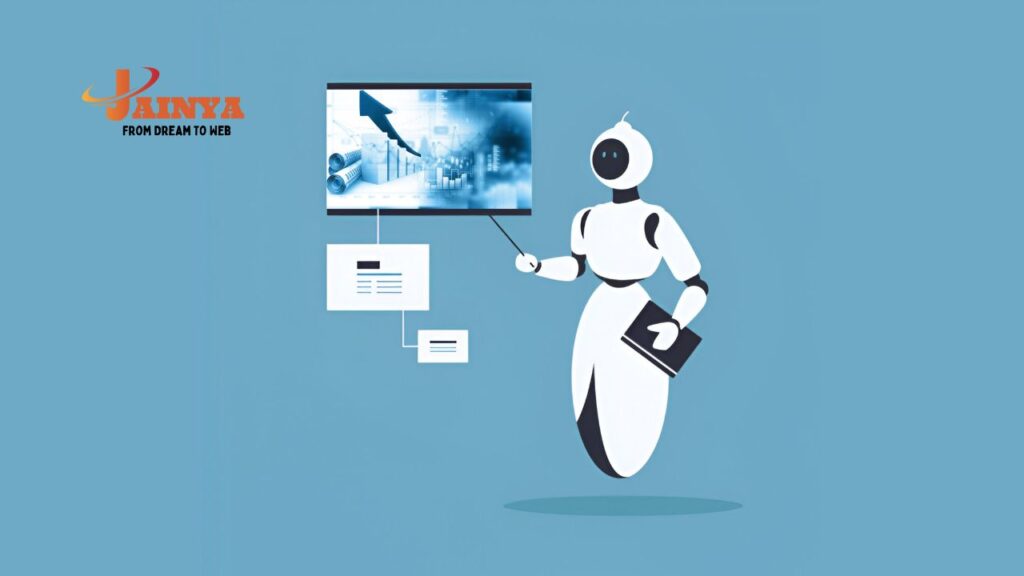The design presumes that RPA technology will do well in the future. In the past few years, RPA technology has come a long way. What began as an easy way to automate tasks that were done over and over again has grown into a powerful tool that can change the way businesses work as a whole.

The fact that RPA is always changing is one of the coolest things about it. It will likely get stronger and better able than ever before. Because of this, insurance companies that use this technology will be able to stay ahead of the competition and gain from it. It keeps getting stronger because new features and functions are added all the time.
Here are some of the most exciting possibilities for the future of Robotic Process Automation (RPA):

- Intelligent Automation: Putting RPA, AI, and machine learning together
When AI and machine learning are added to RPA, robots will be able to make better choices and learn from their mistakes. This mix will lead to more advanced technology that can handle complicated tasks and adjust to changing conditions. - Predictive analytics and automation that is driven by data
With predictive analytics, RPA will be able to do more than just automate chores. RPA systems can predict outcomes, improve workflows, and fix potential problems before they happen by using data from the past. This makes the general performance of the business better. - RPA in the Cloud: Flexibility and Room to Grow
In the future, there will be better RPA options in the cloud, which will make it easier for businesses to automate more tasks and connect them to other cloud services. This will make RPA solutions more accessible and lower prices, so more organisations will be able to use them. - Hyperautomation: Automation from Start to Finish
Hyperautomation will try to automate whole business environments, not just one process at a time. Businesses can automate complicated processes across departments by combining RPA, AI, and other technologies. This will make them more efficient and accurate. - RPA in Customer Service: Better Experience for Users
The future of RPA will have a big effect on how well customers are served. When chatbots and virtual assistants are added to RPA, it will be able to handle more interactions with customers. This will mean faster replies and more personalised service, which will make customers happier. - Smarter Flows of Work with Natural Language Processing
RPA will grow by adding NLP features that will let it handle unstructured data like emails and papers and talk to users more clearly. This new feature will make RPA more flexible and able to handle more jobs. - Robots that deal with messy, complex data
Taking care of unstructured data like pictures, emails, and scribbled notes is one of the hardest things for RPA right now. In the future, RPA will have better tools and be able to connect to AI-powered systems. This will let robots work with a wide range of data types without any problems. - More advanced safety features
As more things are automated, security will become more important. In the future, RPA will focus on better security features like encryption, user authentication, and compliance checks. This will make sure that processes in all fields are safe and secure.
Where is RPA Right Now?
One of the hottest business automation ideas right now is robotic process automation, or RPA. RPA is software that automates business processes. It can be used in many fields and for many reasons.
Now, what does RPA have to offer companies these days?
RPA can help businesses automate jobs that are done over and over again and take a lot of time. This can give workers more time to do things that add value, like helping customers or coming up with new ideas.
RPA can help businesses be more accurate and efficient by cutting down on mistakes made by people. By automating processes, businesses can also make it easier to follow the rules. Last but not least, RPA can help businesses cut costs.
What’s Next?

As more companies around the world go digital, the need for RPA will keep rising. Between 2022 and 2028, the market for RPA is projected to grow at a rate of 35.3% per year, reaching $17.43 billion by 2028.
One of the main reasons for this growth is that business processes need to be more efficient and accurate all the time. Firms that want to get more done with less will use RPA more and more to automate boring, time-consuming jobs that don’t add much value.
RPA will also become more popular as artificial intelligence (AI) and machine learning (ML) technologies keep getting better. As these technologies get better, bots will be able to do both simple jobs and complicated ones that need intelligence. The long-awaited new version of RPA might be coming out soon after all. The new version looks like it will be even easier to use and work better than the old one.
What new features are going to be added?
At this point, it’s hard to say what RPA will be able to do in the future. On the other hand, we can guess based on what’s happening now.
For starters, RPA is likely to get smarter and easier to use. To set up and use many RPA tools, you need to know a bit about technology. But as the technology gets better, we expect these tools to be easier to use. These changes will allow a bigger group of people to use them, even those who aren’t tech-savvy.
Second, it’s possible that RPA will work with more business systems and processes. RPA, for instance, is often used by itself to automate certain jobs. Next year, though, RPA is likely to be more deeply built into other business tools and processes. It will work better and be stronger after this.
Last but not least, RPA is likely to get better at doing more difficult jobs. Business of all kinds will find RPA even more useful as technology keeps getting better.
These are just a few of the many ways that RPA could go in the future. We expect that more cool features will be added as the technology keeps getting better. This will make RPA an even more important tool for companies around the world.
Start right away
Robotic process automation can help your company speed up processes and get rid of jobs that are done over and over again. It can also help you make your work more accurate and consistent. Robotic process automation can be used to do things like enter data, fill out forms, and handle documents automatically. Robotic process automation can also help you keep track of your work by setting up reminders and scheduling jobs for you.
Jainya Tele Enterprises can help you with RPA services that will make your business processes go faster and work better. Our team is made up of skilled professionals who know how to use the newest RPA tools and technologies and can help you bring them into your business. Get in touch with us right away to find out more about our RPA services.
RPA not only helps businesses be more productive and save time, it also helps them avoid waste. RPA can also help businesses handle tasks that are done over and over again so that workers can focus on more important tasks. So, now is the time to put RPA to use in your business if you’re thinking about it! It looks like RPA will have a bright future, which is good for businesses.
How does robotic process automation differ from intelligent automation
Robotic Process Automation (RPA)
Robotic process automation, or RPA, is a type of software that makes it simple to create, install, and oversee software robots that act like people when they use computers and software, copying, or moving files.
Capabilities: Focuses on pre-defined rules and workflows.
Examples: Automating invoice processing, data extraction from forms, or transferring data between systems.
Limitations: Cannot make decisions or handle unstructured data; it requires structured inputs and predefined rules.
Intelligent Automation (IA)
IA combines RPA with (AI), Machine Learning (ML), and cognitive technologies to handle more complex tasks involving decision-making, learning, and unstructured data.
Capabilities: Processes unstructured data (e.g., images, text), learns from past data, and adapts dynamically to changes.
Examples: Chatbots that understand and respond to natural language, automated fraud detection systems, or predictive analytics in business processes.
Key Differences
| Aspect | RPA | IA |
|---|---|---|
| Scope | Rule-based tasks | Rule-based + decision-making tasks |
| Technology Used | Software bots | AI, ML, NLP + RPA |
| Input Requirements | Structured and standardized | Handles structured + unstructured data |
| Adaptability | Requires manual updates for changes | Learns and adapts to new scenarios |
| Use Cases | Data migration, invoice processing | Fraud detection, sentiment analysis |
Related Comparisons
RPA vs AI
- RPA: Focused on automation of specific tasks using defined rules.
- AI: Focused on mimicking human intelligence, capable of decision-making and learning.
RPA vs Automation
- RPA: A subset of automation tailored for specific rule-based tasks.
- Automation: Broader, encompassing any technology that reduces human intervention, including both RPA and IA.
Intelligent Process Automation (IPA) vs RPA
- IPA: Extends RPA with cognitive technologies like AI/ML, making it a broader, more flexible tool.
- RPA: A foundational tool that IPA builds upon.
Intent Breakdown
- Informational Intent: When users want to understand the concepts and differences between RPA, AI, IA, or automation in general.
- Commercial Intent: When users are exploring options for implementation, software tools, or service providers for IA or RPA solutions.

Leave a Comment